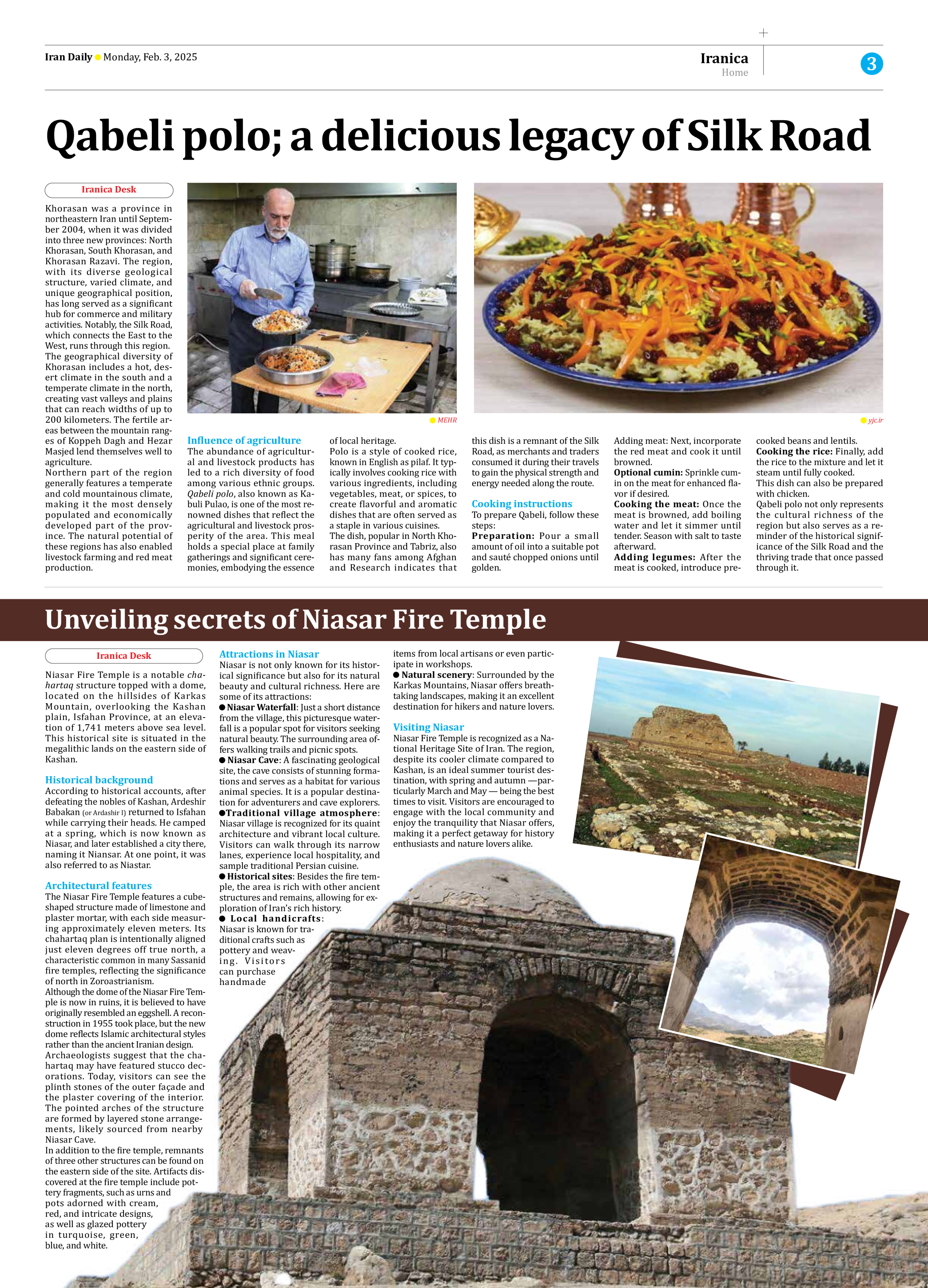
Qabeli polo; a delicious legacy of Silk Road
Khorasan was a province in northeastern Iran until September 2004, when it was divided into three new provinces: North Khorasan, South Khorasan, and Khorasan Razavi. The region, with its diverse geological structure, varied climate, and unique geographical position, has long served as a significant hub for commerce and military activities. Notably, the Silk Road, which connects the East to the West, runs through this region.
The geographical diversity of Khorasan includes a hot, desert climate in the south and a temperate climate in the north, creating vast valleys and plains that can reach widths of up to 200 kilometers. The fertile areas between the mountain ranges of Koppeh Dagh and Hezar Masjed lend themselves well to agriculture.
Northern part of the region generally features a temperate and cold mountainous climate, making it the most densely populated and economically developed part of the province. The natural potential of these regions has also enabled livestock farming and red meat production.
Influence of agriculture
The abundance of agricultural and livestock products has led to a rich diversity of food among various ethnic groups. Qabeli polo, also known as Kabuli Pulao, is one of the most renowned dishes that reflect the agricultural and livestock prosperity of the area. This meal holds a special place at family gatherings and significant ceremonies, embodying the essence of local heritage.
Polo is a style of cooked rice, known in English as pilaf. It typically involves cooking rice with various ingredients, including vegetables, meat, or spices, to create flavorful and aromatic dishes that are often served as a staple in various cuisines.
The dish, popular in North Khorasan Province and Tabriz, also has many fans among Afghan and Research indicates that this dish is a remnant of the Silk Road, as merchants and traders consumed it during their travels to gain the physical strength and energy needed along the route.
Cooking instructions
To prepare Qabeli, follow these steps:
Preparation: Pour a small amount of oil into a suitable pot and sauté chopped onions until golden.
Adding meat: Next, incorporate the red meat and cook it until browned.
Optional cumin: Sprinkle cumin on the meat for enhanced flavor if desired.
Cooking the meat: Once the meat is browned, add boiling water and let it simmer until tender. Season with salt to taste afterward.
Adding legumes: After the meat is cooked, introduce pre-cooked beans and lentils.
Cooking the rice: Finally, add the rice to the mixture and let it steam until fully cooked.
This dish can also be prepared with chicken.
Qabeli polo not only represents the cultural richness of the region but also serves as a reminder of the historical significance of the Silk Road and the thriving trade that once passed through it.







